Headlines They Probably Should Have Re-Thought
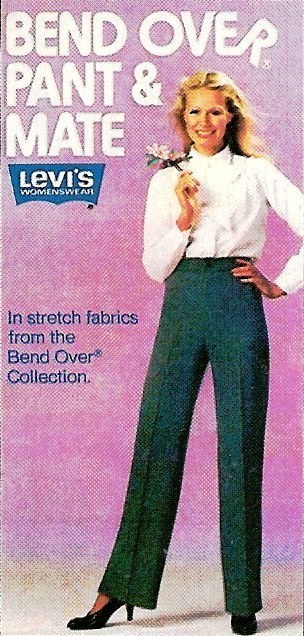
What girl wouldn't have responded to this ad?
The Cheapest Way to Monitor Your Credit
 Before you pay money to monitor your credit, check out these sites which promise to do the job for free:
Before you pay money to monitor your credit, check out these sites which promise to do the job for free:
CreditKarma.com
CreditSesame.com
You Can’t Keep a Good Puppet Down
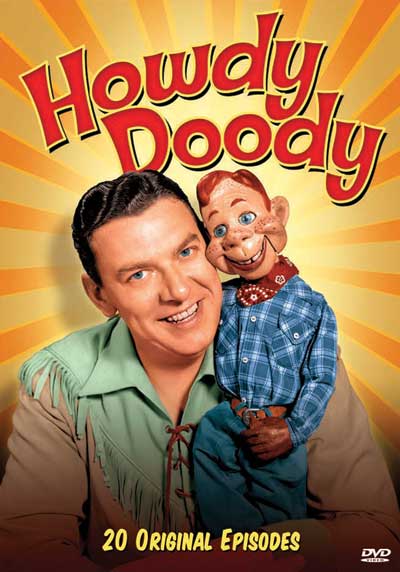 The Life & Times of Howdy Doody - Part 5
The Life & Times of Howdy Doody - Part 5
We all know that childhood can’t last forever (unless your name is Bart Simpson). So too, for our favorite childhood television shows. The last network telecast of The Howdy Doody Show took place on September 24, 1960. The following Saturday on NBC, many of us were entertained by Shari Lewis, Lamb Chop and Charlie Horse.
But whatever happened to Howdy Doody and Buffalo Bob? Keep reading and find out.
When Howdy Doody left NBC in 1960, the show simply vanished. Unlike Adventures of Superman, The Lone Ranger and other early kid-vid, the show never went into syndication. Perhaps that was due to the fact that most of the show’s early days existed only as kinescopes.
Kinescope was the way networks preserved copies of their live shows. The name sounds way more high-tech than it actually was. A kinescope was simply a camera hooked to a recording device and pointed at a monitor. That’s it. It recorded the show as it was broadcast live. Kinescoped shows look rough, even back in the day. Remember that early TV screens were slightly rounded, so the kinescopes looked a little distorted and fuzzy.
So Buffalo Bob retired to New Rochelle and bought a liquor store. (We don’t know how we would have reacted had we ever found ourselves in later life purchasing a bottle of whiskey from Buffalo Bob.) He also wound up purchasing a radio station, WQDY, in Calais, Maine. Howdy sat in a glass case in Bob’s home office.
As the 60’s went on, Bob sold the New York liquor store, kept the radio station and became a “snow-bird,” spending six months in Florida and six months in Maine.
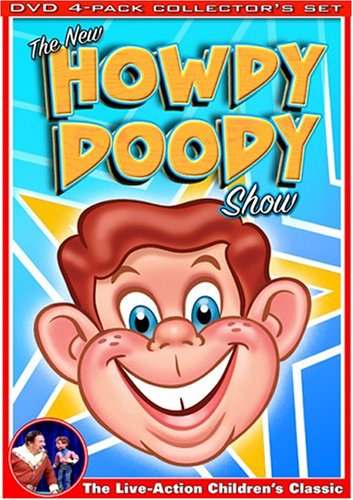 Then one day in 1970, he received an invitation from the University of Pennsylvania. Would he be interested in coming to the campus and staging a live Howdy Doody Show? Bob was a little unsure and so, demanded a fee he thought the school would never pay: $1,000. The school’s event organizer assured Bob that would be no problem. The Howdy Doody Revival was about to get underway.
Then one day in 1970, he received an invitation from the University of Pennsylvania. Would he be interested in coming to the campus and staging a live Howdy Doody Show? Bob was a little unsure and so, demanded a fee he thought the school would never pay: $1,000. The school’s event organizer assured Bob that would be no problem. The Howdy Doody Revival was about to get underway.
The event was a stunning, wall-to-wall sell-out. Students had to be turned away. Those who did get in, laughed, applauded wildly and sang along as Buffalo Bob ran through many of the numbers that had been used on the show over the years. (Who can forget that timeless classic “Cross the Street with Your Eyes”?) Other schools took note. For the next several years, Bob and Howdy appeared at over 500 colleges all across the United States and even played the Carnegie Hall of rock venues – New York’s Fillmore East – in 1972.
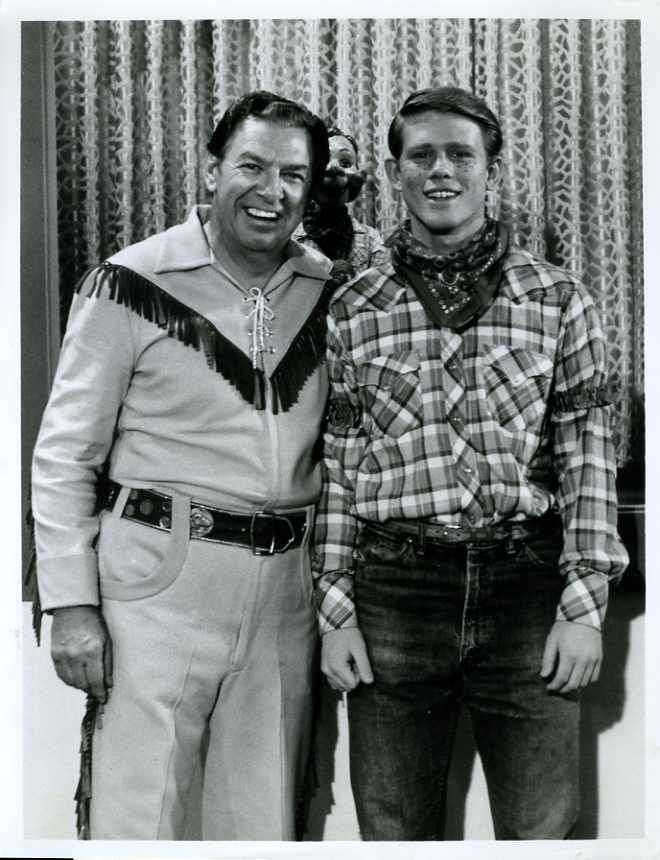
Ultimately, a backer appeared for a new updated Howdy Doody series. The show was produced in Florida in 1976 with most of the original cast returning to their iconic roles. The New Howdy Doody Show was successfully syndicated in all of the country’s major markets. Unfortunately, kids now used to Sesame Street and the Muppets did not warm up to Howdy the way the Baby Boomers had. The show was cancelled after only half a season.
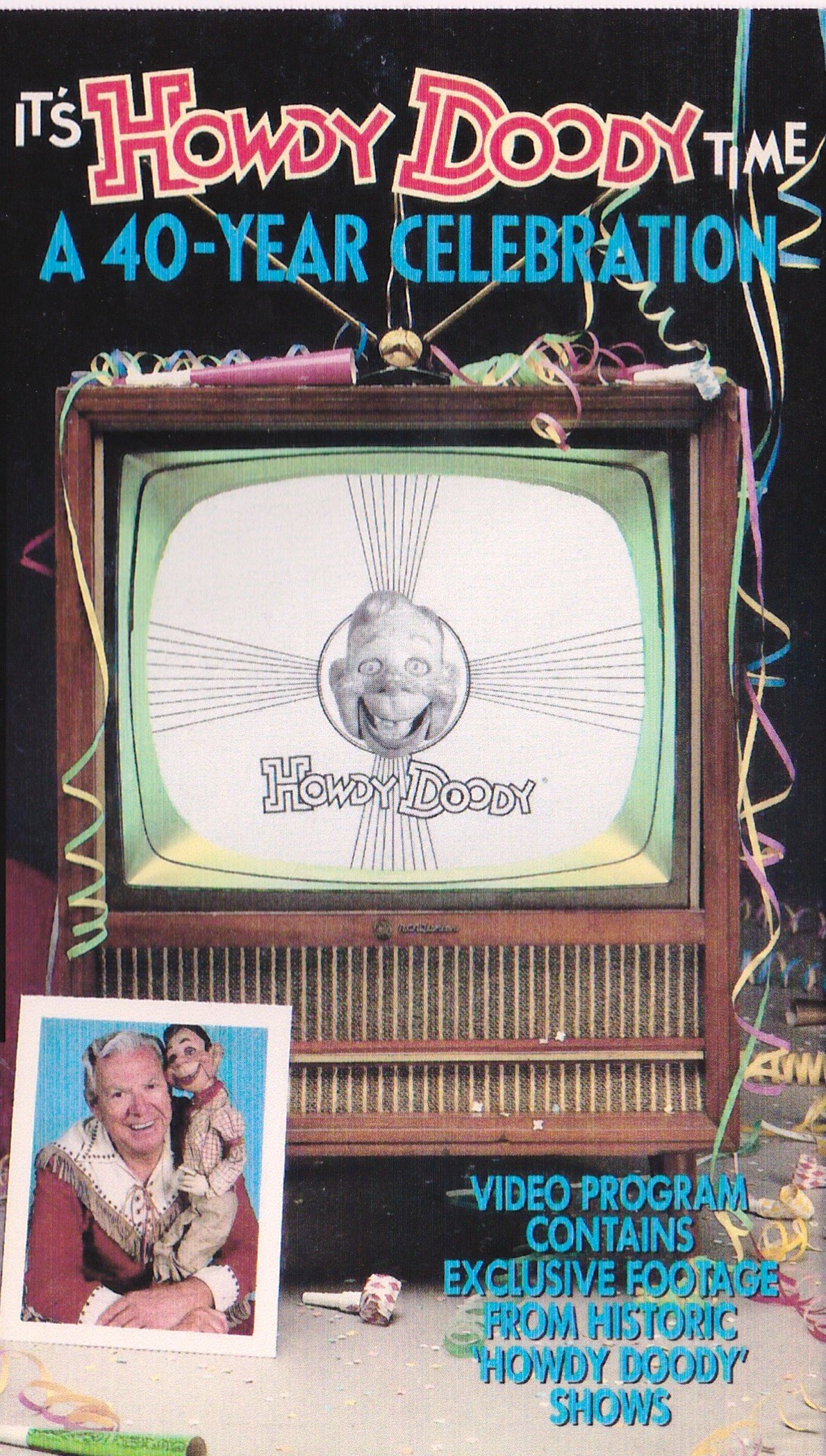 But Howdy did get one final hurrah. In 1987, a two-hour television special titled It's Howdy Doody Time: A 40-Year Celebration was syndicated in every major market in the U.S. Buffalo Bob was joined by Lew Anderson (Clarabell), Bill Lecornec (Chief Thunderthud), Nick Nicholson (Cornelius Cobb) and a full complement of the puppets who brought so much happiness to Baby Boomers’ childhoods. In addition, the show featured guest stars such as Milton Berle, Johnny Carson, John Ritter, Jerry Mathers and Tony Dow.
But Howdy did get one final hurrah. In 1987, a two-hour television special titled It's Howdy Doody Time: A 40-Year Celebration was syndicated in every major market in the U.S. Buffalo Bob was joined by Lew Anderson (Clarabell), Bill Lecornec (Chief Thunderthud), Nick Nicholson (Cornelius Cobb) and a full complement of the puppets who brought so much happiness to Baby Boomers’ childhoods. In addition, the show featured guest stars such as Milton Berle, Johnny Carson, John Ritter, Jerry Mathers and Tony Dow.
After that, Bob and Howdy returned to retirement, making occasional personal appearances. Of course, during the show’s run, there was actually more than one Howdy Doody puppet. The back-up puppet (“Double Doody”) today resides in the Smithsonian Institute in Washington, D.C. A stringless model of Howdy used in publicity photos and sometimes used when Bob was touring (“Photo Doody”) is in the hands of a private collector. The original Howdy remained in Bob’s possession until he passed away in 1998. Then, a wild custody battle broke out. The winner was the Detroit Institute of Arts, who had been named in Bob Smith’s will as the place he wanted the puppet to go.
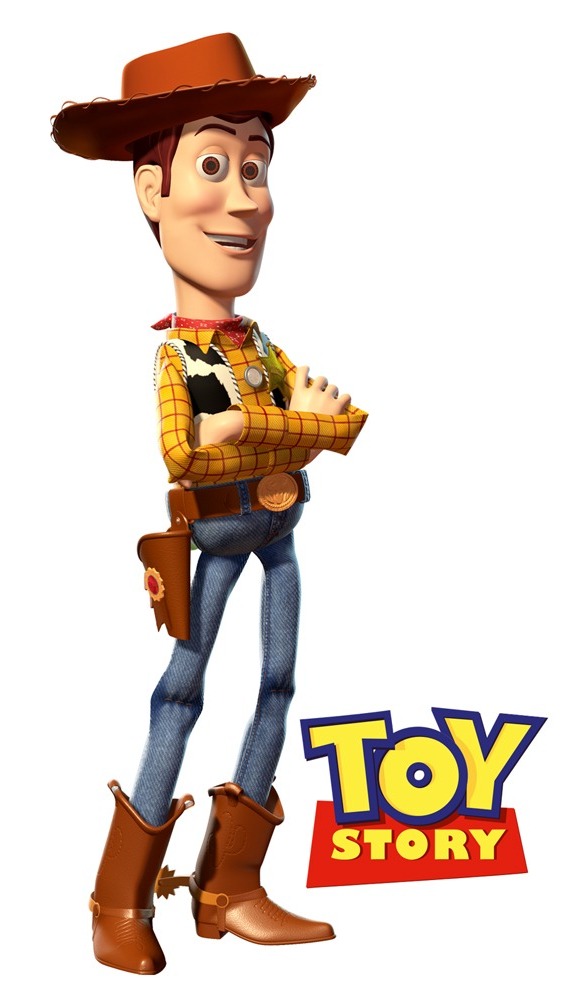 But you can still see echoes of Howdy in pop culture. In fact, most of the kids raised on Disney-Pixar’s Toy Story movies would be surprised to find out that the lead character of Woody (voiced by Tom Hanks) was undoubtedly patterned after Howdy.
But you can still see echoes of Howdy in pop culture. In fact, most of the kids raised on Disney-Pixar’s Toy Story movies would be surprised to find out that the lead character of Woody (voiced by Tom Hanks) was undoubtedly patterned after Howdy.
If these trips back to Doodyville have got you anxious to learn more or even re-watch some of those classic episodes, we’ll tell you where you satisfy that itch next time.
Love That Bob!
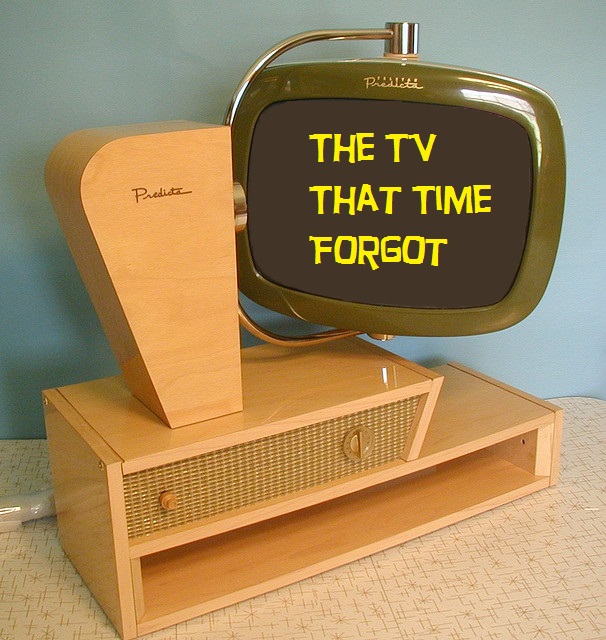 Imagine a TV series where Miss Hathaway from Beverly Hillbillies, Alice from The Brady Bunch and Dobie Gillis all hung out together. There was such a series in the 1950’s, originally called The Bob Cummings Show, but better remembered due to the name it adopted for its far longer tenure in syndication, Love That Bob!
Imagine a TV series where Miss Hathaway from Beverly Hillbillies, Alice from The Brady Bunch and Dobie Gillis all hung out together. There was such a series in the 1950’s, originally called The Bob Cummings Show, but better remembered due to the name it adopted for its far longer tenure in syndication, Love That Bob!
Bob Cummings starred as Bob Collins (continuing the long-standing but frankly puzzling sit-com tradition where the lead actor uses their real first name but a fictitious last name).
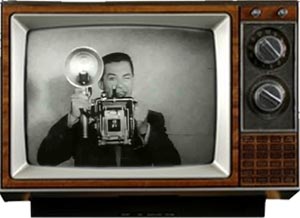 Cummings played a glamour photographer who was always surrounded by stunningly gorgeous models, many of whom he loved and left. Back then, he was a rakish playboy. Today, we’d call him commitment-phobic. Bob’s character was also interested in aviation.
Cummings played a glamour photographer who was always surrounded by stunningly gorgeous models, many of whom he loved and left. Back then, he was a rakish playboy. Today, we’d call him commitment-phobic. Bob’s character was also interested in aviation.
In real life, photography and flying private planes were two of Cummings’ major interests. We suspect dating beautiful women was also an interest as he was married five times.
On Love That Bob, Cummings lived with his widowed sister, played by Rosemary DeCamp and her son, Chuck (played by Dwayne Hickman). Chuck idolized Bob to the constant worry of his sister.
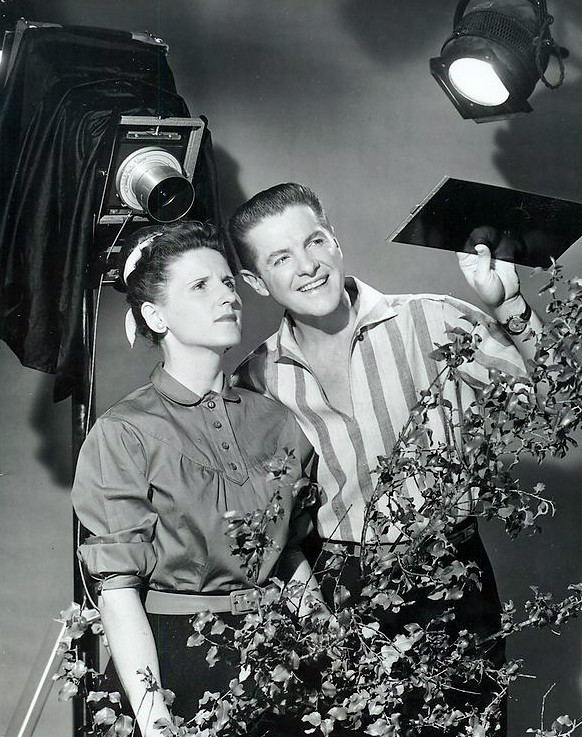
(Davis actually returned to the Schultzy character in The Brady Bunch Movie made in 1995!)
Also occasionally dropping around the office to moon over Bob was Nancy Kulp as Pamela Livingstone, an avid bird watcher. And on several episodes, Cummings played dual roles, appearing as his own grandfather, Josh Collins.
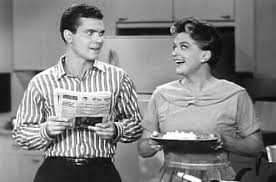 The creator, producer and head writer for the show was a guy named Paul Henning. He would go on to greater fame and much greater fortune as the creator of The Beverly Hillbillies (where he cast Kulp as Miss Hathaway), Petticoat Junction (where CBS actually let him name a town Hooterville) and Green Acres (still one of the most surrealistic shows ever on network television).
The creator, producer and head writer for the show was a guy named Paul Henning. He would go on to greater fame and much greater fortune as the creator of The Beverly Hillbillies (where he cast Kulp as Miss Hathaway), Petticoat Junction (where CBS actually let him name a town Hooterville) and Green Acres (still one of the most surrealistic shows ever on network television).
Love That Bob started out on NBC in 1955, then moved to CBS for two years and then back to NBC for another two years.
Stan Lee said he initially based the Pepper Potts character in Iron Man on Davis’ Schultzy, although he quickly moved the character in another direction.
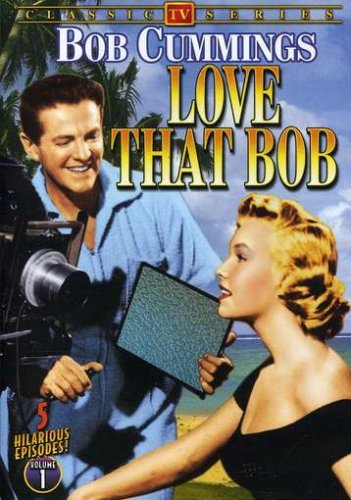 Many of the show's episodes have lapsed into public domain and can be found on a variety of budget DVDs.
Many of the show's episodes have lapsed into public domain and can be found on a variety of budget DVDs.
BTW – the show was bankrolled by none other than George Burns, who knew a thing or two about good comedy.
Natural Doesn’t Always Mean Safe
 Some Herbal Supplements Should Be Taken with Caution
Some Herbal Supplements Should Be Taken with Caution
Just because something is natural doesn’t mean it’s always safe! After all many mushrooms are poisonous and they’re natural, aren’t they?
According to doctors, these common herbal supplements carry some degree of risk:
Ginko and Ginseng – When these are mixed with blood-thinning meds, they can cause excessive bleeding
Kava – Shown to cause liver damage
St. John’s Wort – Can interfere with high blood pressure meds and satins
In you have any questions, may sure you take with your doctor about any herbal or vitamin supplements you are taking.
Comic Books Warped Our Brains!
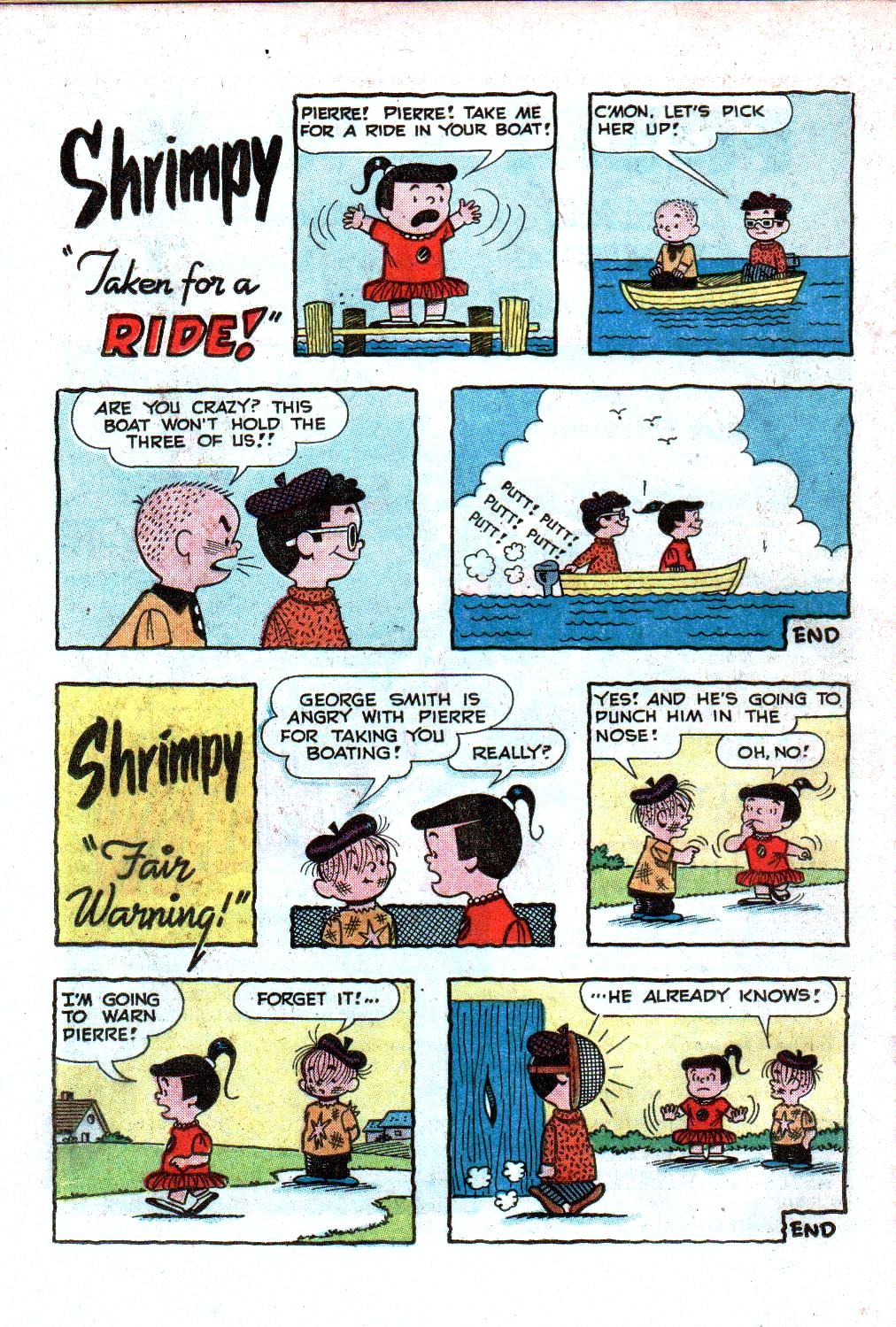 Plagarism? Don't be silly! Imitation is... well... it was the easiest way for comic books to make a buck. These characters appear in an Archie Comics from 1960. Charles Schulz may have wanted to called his lawyers.
Plagarism? Don't be silly! Imitation is... well... it was the easiest way for comic books to make a buck. These characters appear in an Archie Comics from 1960. Charles Schulz may have wanted to called his lawyers.
All Right, So Who The Heck Is Sloopy?
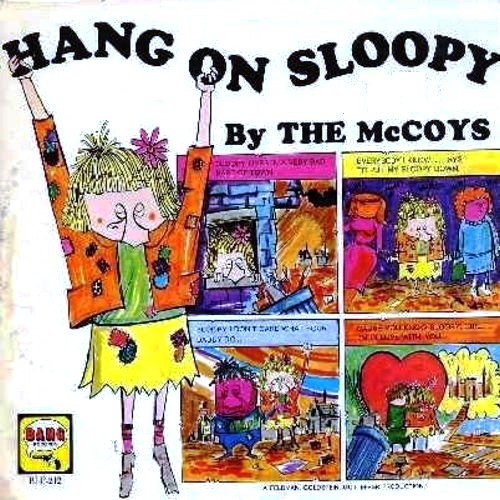 "Hang On Sloopy” is a rock classic. But few know the long and winding road it took before becoming a big hit for the McCoys in 1965.
"Hang On Sloopy” is a rock classic. But few know the long and winding road it took before becoming a big hit for the McCoys in 1965.
The song began with the title “My Girl Sloopy.” It’s credited to Wes Ferrell and Bert Russell (a.k.a. Bert Berns). However, Rick Derringer claims the song was really written by a St. Louis high school student who sold the rights to Russell. If that’s true, then Sloopy might be Dorothy Sloop, a jazz singer from the same area.
The song was first recorded by an L.A.-based R&B group called the Vibrations. That version reached #10 on the R&B charts and #26 on the pop charts.
The original version of Sloopy can be heard here.
The Strangeloves were looking for a follow-up to their hit “I Want Candy” and thought “My Girl Sloopy” might do the trick. Pay attention now because from here, the story gets a little twisted.
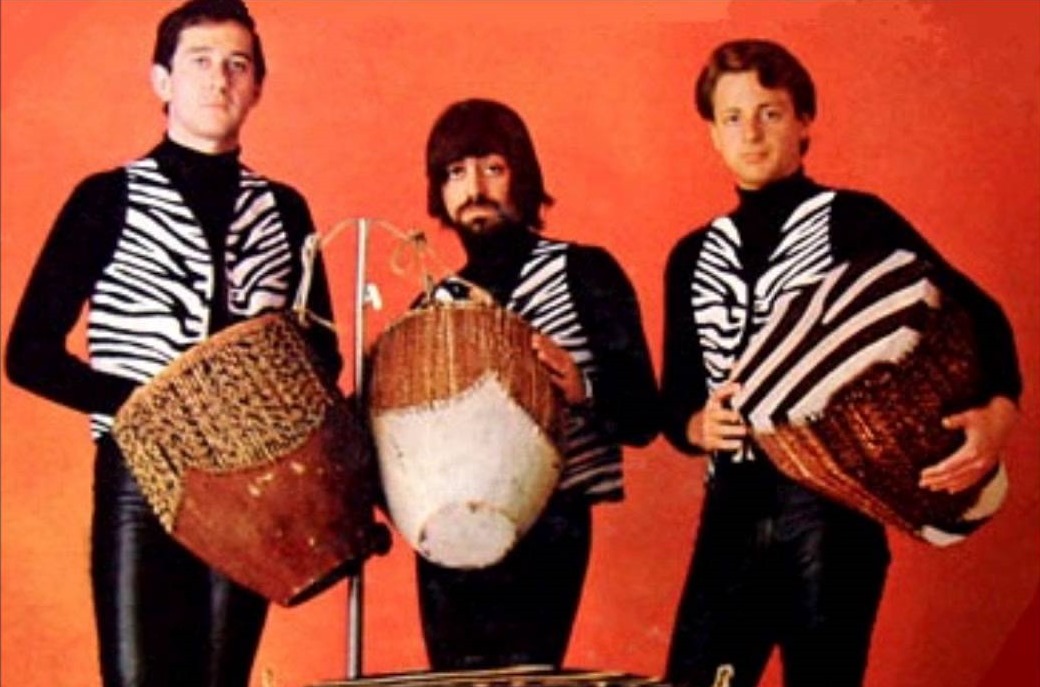 The Strangeloves were touring with the Dave Clark Five and playing “Sloopy” as part of their live show. The DC5 liked the tune so much they informed the Strangeloves that Clark and the boys had decided to make it their next single.
The Strangeloves were touring with the Dave Clark Five and playing “Sloopy” as part of their live show. The DC5 liked the tune so much they informed the Strangeloves that Clark and the boys had decided to make it their next single.
What to do? The Strangeloves knew it was too soon to release their next single. “Candy” was still high in the charts, but they didn’t want the Brits to beat them to the punch. Fortunately, the Strangeloves also had secret identities. In reality, they were record producers Bob Feldman, Jerry Goldstein, and Richard Gottehrer, who were pretending to be an Australian rock band.
Feldman, Goldstein and Gotteher decided to use a Dayton, Ohio band that had once opened for the Strangeloves. That band was Rick and the Raiders. Still with us?
First, the Strangeloves decided to rename the song “Hang On Sloopy.” Then, they decided that Rick and the Raiders needed to change their name to avoid confusion with the already popular Paul Revere and the Raiders. So Rick and the Raiders became the McCoys. Finally, the McCoys lead singer, Rick Zehringer changed his name to Rick Derringer.
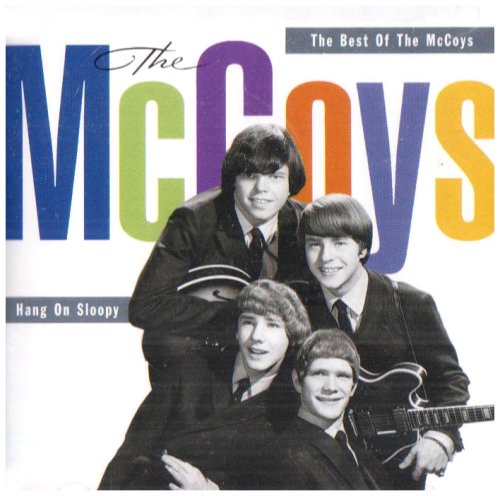 Feldman, Goldstein and Gotteher then flew Derringer to New York and had him record the lead vocal track over already-recorded backing tracks. Got all that?
Feldman, Goldstein and Gotteher then flew Derringer to New York and had him record the lead vocal track over already-recorded backing tracks. Got all that?
That version was then rush-released to get it onto radio station and into record stores ahead of the Dave Clark Five.
It worked. “Hang On Sloopy” was released in August of 1965 and by Halloween every garage band in the country had added it to their repertoire. Dave Clark shelved their plans and never recorded the song.
Unfortunately, the Strangeloves never could find another song as good and their attempts to follow-up “I Want Candy” fizzled.
Rick Derringer, however, went on to a long and successful career.
Ski Party (1965)
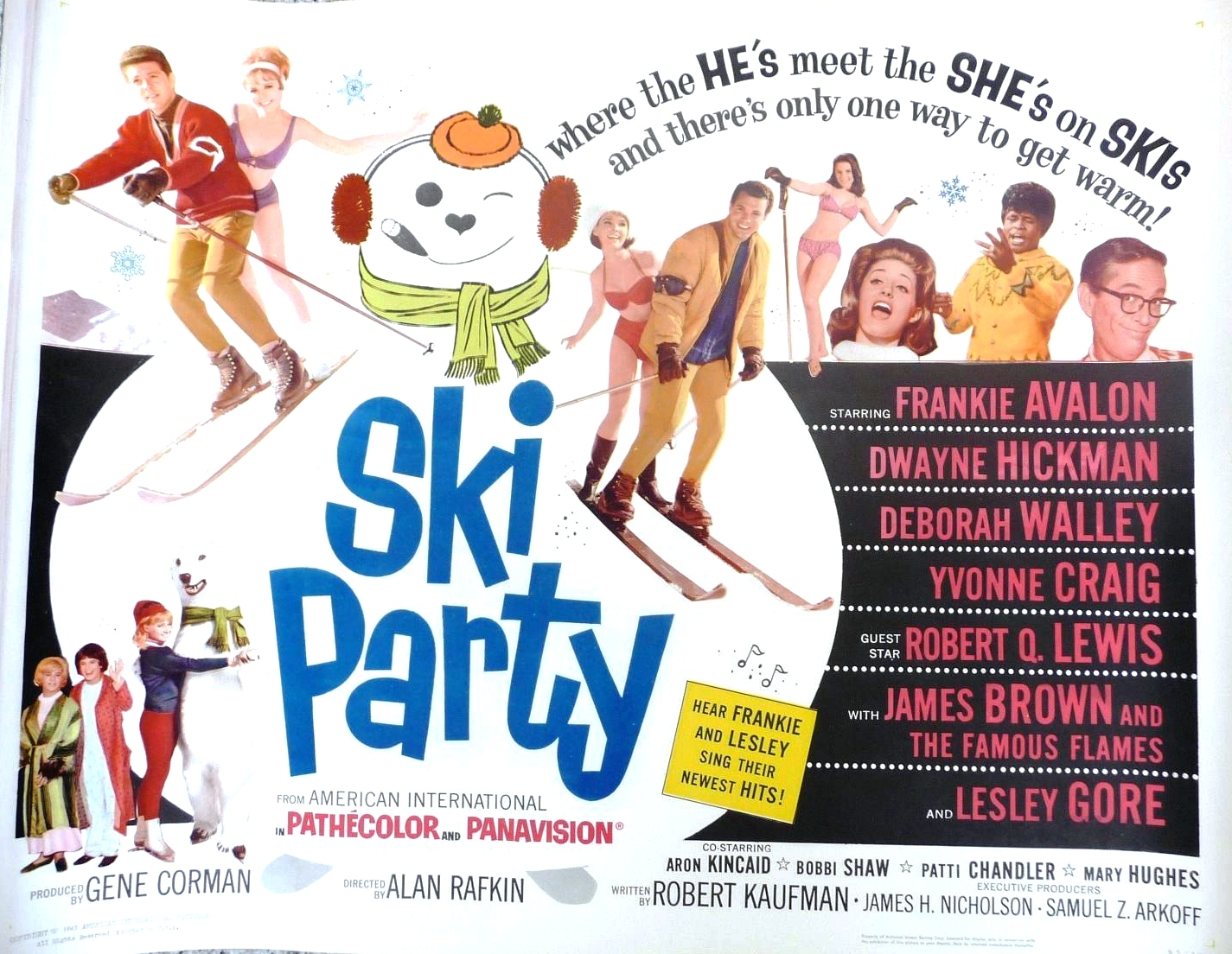 Beach Party movies, why limit them to summer? That must have been the thinking among the brain trust at American International Pictures. Apparently, nobody in the room said, “Because most of the drive-ins in America are closed during the winter!”
Beach Party movies, why limit them to summer? That must have been the thinking among the brain trust at American International Pictures. Apparently, nobody in the room said, “Because most of the drive-ins in America are closed during the winter!”
That’s how we wound up with this unalloyed gem of a movie, a combination of Some Like It Hot and Beach Blanket Bingo – only in parkas – called Ski Party.
The 6th entry in the Beach Party series has everything – except Annette. Or at least Annette is only around for two quick scenes in the beginning. She is there in the beginning of the movie as a college sex ed professor (!) who gets into some inappropriate behavior with one of her students.
Her replacement on this ski trip is Deborah Walley, who clearly lacks two of Ms. Funicello’s major attractions. I mean Annette’s singing voice and big helmet of black hair (really, get your mind out of the gutter).
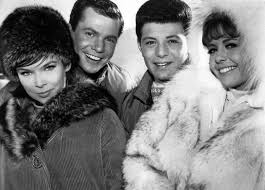 So Deborah is teamed with Frankie Avalon who is not called Frankie in this movie. He’s called Todd. Why? We don’t know. The other couple of interest is Dobie Gillis and Batgirl. Yes, it’s Dwayne Hickman in what must have been his only appearance as somebody other than Dobie and Yvonne Craig before she moved to Gotham.
So Deborah is teamed with Frankie Avalon who is not called Frankie in this movie. He’s called Todd. Why? We don’t know. The other couple of interest is Dobie Gillis and Batgirl. Yes, it’s Dwayne Hickman in what must have been his only appearance as somebody other than Dobie and Yvonne Craig before she moved to Gotham.
In what passes for a plot in these films, the “Beach Party Gang” decides to make a ski trip for reasons we can’t remember and Frankie and Dwayne decide to spend a good portion of the trip in drag for reasons that are never quite clear. The fact that both of them suddenly have a decent wardrobe of girl’s clothes along and are experts at make-up leads us to think maybe the idea wasn’t so spur-of-the-moment after all.
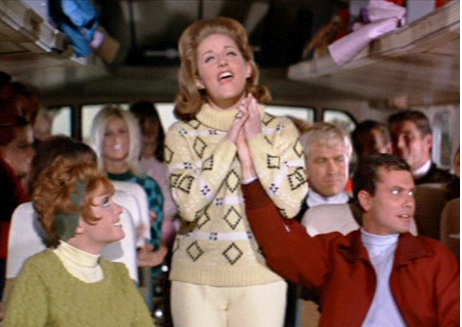 Anyway, on the way up to the chalet the kids are entertained by Lesley Gore, who really needs to fire her agent if the only venue he could book for her was playing a Trailways bus.
Anyway, on the way up to the chalet the kids are entertained by Lesley Gore, who really needs to fire her agent if the only venue he could book for her was playing a Trailways bus.
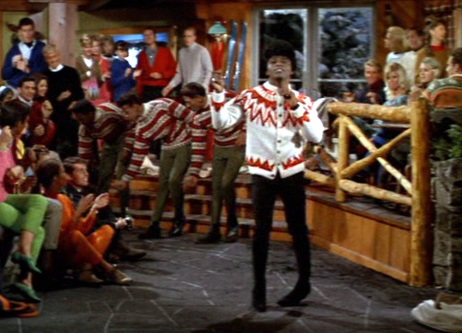 At the chalet, James Brown and His Famous Flames show up to lip sync “I Feel Good” (NOTE: they do not sing along to the hit single, but to a new recording that’s slightly different).
At the chalet, James Brown and His Famous Flames show up to lip sync “I Feel Good” (NOTE: they do not sing along to the hit single, but to a new recording that’s slightly different).
Even more mystifying, when the kids arrive at the ski lodge, the very first thing they do is… put on their bathing suits and dance by the swimming pool! As there is clearly snow all around them, why are they wearing next to nothing? And wouldn’t they know that the swimming pool would be frozen? We strongly suspect it was to get in the required American International quota of totally gratuitous shots of young girls shaking their fannies into the camera.
There are some musical numbers by the regular cast, but let’s be honest. These are put into the film so the audience members can get in some serious time playing tonsil hockey with their dates.
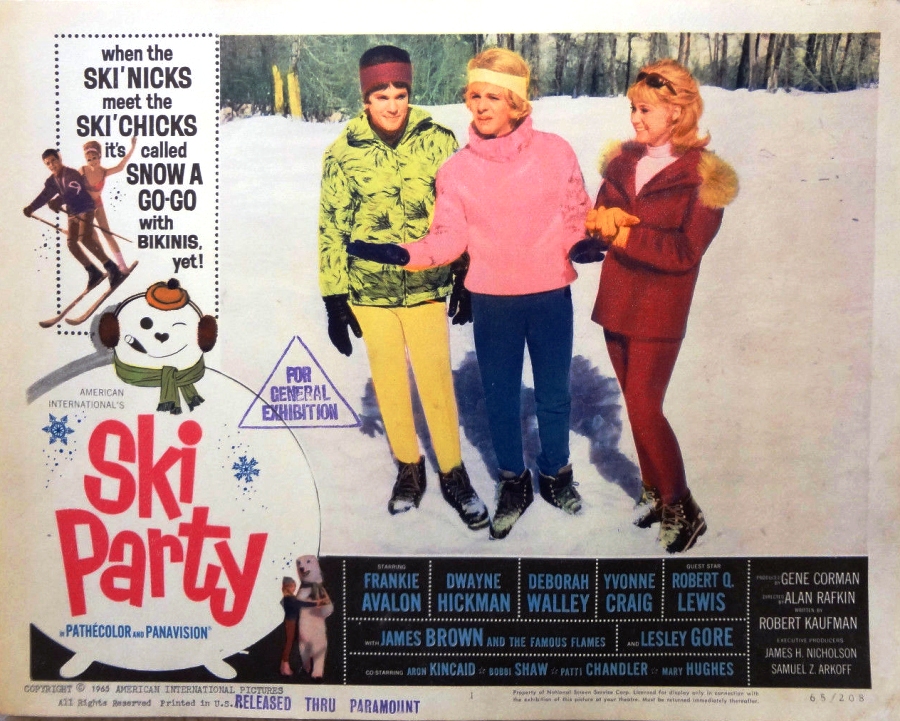 Robert Q. Lewis is the obligatory adult who’s a blithering idiot. Both he and Hickman seem to have some serious gender issues. But that could turn into a whole other picture.
Robert Q. Lewis is the obligatory adult who’s a blithering idiot. Both he and Hickman seem to have some serious gender issues. But that could turn into a whole other picture.
We have a friend who thinks Lewis was seriously cheated out of an Oscar nomination for his work in this film. But then again, we don’t let that friend play with sharp objects.
Alas, Eric Von Zipper is nowhere in sight.
There are lots of fights and girls who refuse to come across until their boyfriends start flirting with other girls (or in Hickman’s case, another guy). And somehow, we’re not really sure how, they all wind up back on the beach in Southern California at the fade-out listening to the Hondells sing about a surfer who eats a lot of Mexican food before riding the waves, named “The Gasser.”
At the end of the credits, they promise that the next film will be Cruisin’ Party (which might be perfect for Hickman’s character paired with, say, Al Pacino), but that party never made it to the big screen.
Ski Party or Some Like It Cold is available on home video and frequently shows up on cable. Really, as these pictures go, it’s above average and is way better than spending an evening getting stuck in the eye with knitting needles.
Enjoy the show!
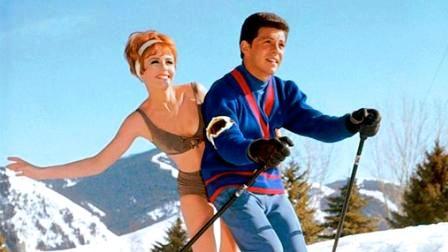
No. This scene appears nowhere in the movie.
Everybody's Crazy About a Sharp-Dressed Man
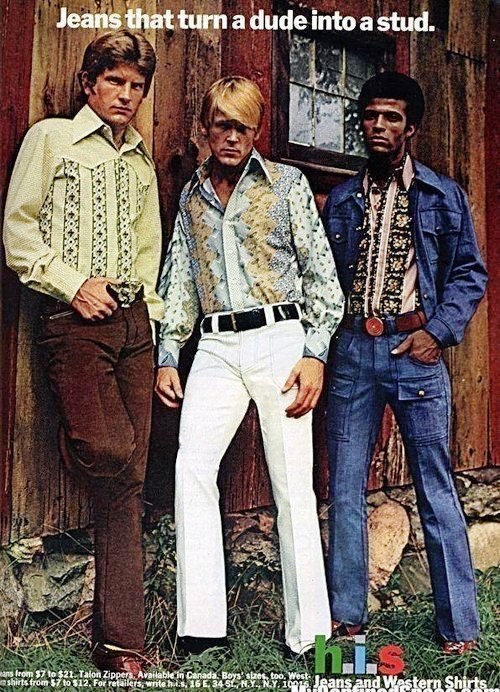
Okay, so we don't have a stampede here... dudes line up on the left and studs on the right!
Happy Valentine's Day from Boomtown America!
Hope you're spending Valentine's with someone you love like Lucy!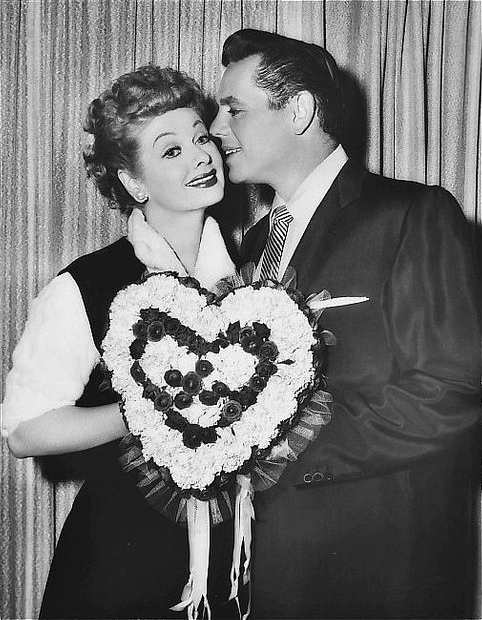
Pop Up Player
Latest Posts–Movies & TV
-
The TV That Time Forgot: Annie Oakley
There was a time when Westerns dominated television programming so thoroughly that it was tough (with no home video, no streaming, and just 3 networks if you lived in a city big enough to have…
-
The TV That Time Forgot: My Living Doll (1964-65)
For a show that lasted only a single season, a surprising number of Baby Boomers remember the situation comedy My Living Doll. Perhaps that’s because once seen, Julie Newmar cannot easily be forgotten. The situation…
-
Alfred Hitchcock Presents
While often lumped together with “The Twilight Zone” and “Boris Karloff’s Thriller,” “Alfred Hitchcock Presents” is the true original, debuting 4 years before TZ and 5 before “Thriller.” Alfred Hitchcock’s show was also different than…
-
The TV That Time Forgot: The Donna Reed Show
For 8 seasons, The Donna Reed Show provided Baby Boomers with a sort of Mother Knows Best amid a ton of family sitcoms focused on the father. Cast as Donna Stone, Donna presided over a…
-
Friday Night at the Drive-In: Lover Come Back (1961)
Sequels & remakes? Nothing new here – Hollywood’s been recycling stuff ever since the first “magic lantern shows.” Want proof? Let’s settle in to watch one of those terribly puritanical “sex comedies” from the Sixties…
-
The TV That Time Forgot: The Millionaire
Boy! Could we use a show like this in real life! From 1955 to 1960, for 5 seasons an eccentric millionaire would give away $1 million to somebody he never even met. We were allowed…


